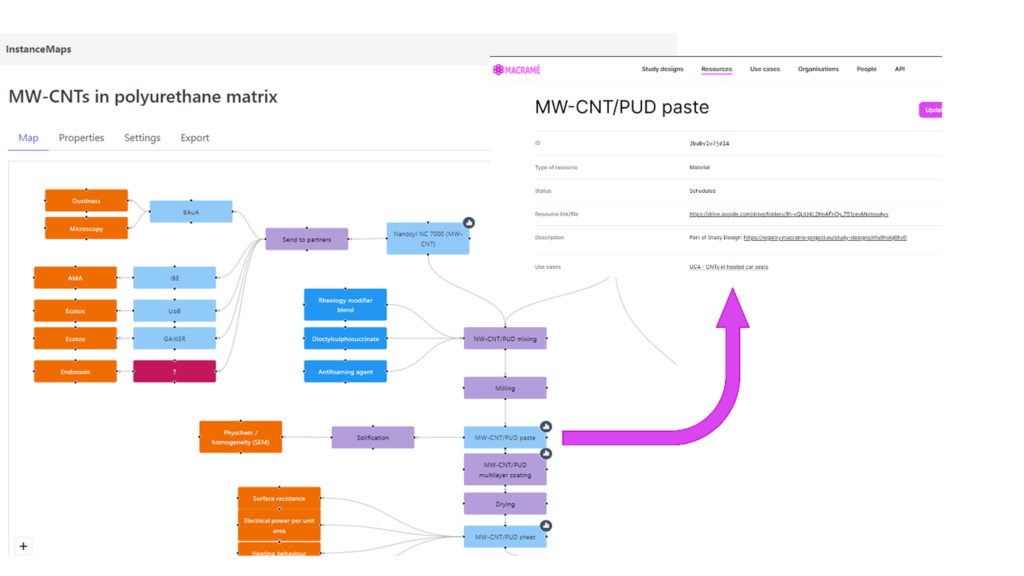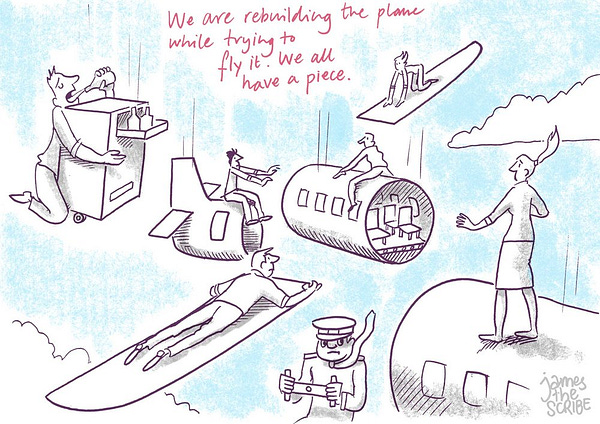A young start-up based in German and Slovenia, Seven Past Nine (7P9) specialises in the provision of data stewardship and solutions for the life sciences.
Slow or missing exchange of information and knowledge (and providing all underlying data to back it up) is still seen as one of the major challenges hindering innovations towards safe-and-sustainable-by-design materials. New, partly disruptive approaches are needed to support data management within projects down to the level of single organisation in implementing the FAIR principles (Findable, Accessible, Interoperable and Re-Usable) optimised for both data producers and users and finally for public sharing.
7P9, even just being a young and small SME, started introducing such new concepts (like data shepherding) and tooling for the generation of harmonised and interoperable data and other research outputs like protocols, standard operating procedures, software and computational models towards an “on-the-fly” FAIR future.
7P9’s Role within the MACRAMÉ Project
7P9 is leader of the work package on Information & (Meta)Data Harmonisation, Processing & Sharing sitting in the centre of the project organising the documentation of the MACRAMÉ Methods, the MACRAMÉ Control Material Library, and material transfer in the MACRAMÉ use cases as well as the information and data sharing between partners, work packages, and use cases. This has started in the first minute of the project by giving the use case leaders the possibility to structure the needed work in the form of visualisations of the experimental workflows, internally also referred to as mind maps. This is based on the combination of instance maps (see the Figure below) and a linked data repository, the MACRAMÉ Information Hub, describing the dependencies of the work by different partners and documents its progress.

Conceptionalised and prototyped in the NanoCommons infrastructure project, MACRAMÉ is now the first chance to put these ideas into practice. Due to the complexity of the advanced materials in different product and biological environments, the complete MACRAMÉ consortium has to work together to evaluate the safety and sustainability of the materials in the real-world scenarios of the use cases and to demonstrate the effectiveness of the MACRAMÉ Methods and the implementation of the SSbD approach based on them. This is not an easy task but thinking about and structuring it around material and data workflows made it achievable.
It was amazing to see how the large use case teams were gathering around a relatively simple tool, the instance maps software, and succeed in document the complete study design and experimental planning including data needs and physical transfer of material.
Thomas Exner, Co-Founder & CSO of 7P9
Data-specific Innovation within the MACRAMÉ Project
Having enthusiastic partners is building the foundation to create an environment, where data management is not seen as a burden but is used to speed up the data-driven innovation process by allowing collaborative planning and instant sharing and use of any generated research output by all partners inspiring fast revision cycles for workflow optimisation or even redesign. However, there are still many things to achieve before this new data management and knowledge sharing can be established as a standard procedure and can be implemented in project with limited additional effort. Currently, we only clearly define how to make others aware what information/data exists and where it can be accessed. Data harmonisation, standardisation and interoperability has still to be completely achieved and the system has to be combined with data input functionality like electronic lab notebooks and standard data reporting formats as well as long-term data storage functionalities for a fully functional environment. The good thing is that MACRAMÉ doesn’t have to do this alone but can profit from its strong integration into the EU and global materials ecosystem partnering with projects like BIO-SUSHY, WorldFAIR, the GO FAIR AdvancedNano Implementation Network and recently granted projects.
Agreeing on implementing this new concept already during the writing stage of the MACRAMÉ proposal and now actually doing it, would not be possible without the support of the consortium. Many of the ideas have been already tested in different other projects and data solutions as described in the paper mentioned above. But they were never combined in one solution with the goal to integrate data from many different partners without manually transforming it to fit into a predefined data template (which is almost impossible for the wide variety of data types generated in MACRAMÉ). Building it now for MACRAMÉ often feels like building a plane while flying and we are grateful to our partners that they accept a lot of limitations in these early stages.

I often feel like the person sitting on the central part of the plane, not knowing if this part is real or only exists in my imagination. The good thing is that we are allowed to try it again if we crash.
Thomas Exner, Co-Founder & CSO of 7P9
… where to from here?
One important aspect not discussed so far is the strong regulatory focus of MACRAMÉ. This has also a important influence on the data management and especially documentation of the protocols and development of standard operating procedures. MACRAMÉ is developing roadmaps towards standardisation and regulatory validation of the developed methods to be continued after the project. Making complete (meta)data available including study design, full provenance trails and set of protocol parameters and variations of these investigated and optimised during the development might give the (pre-)validation a head start. All the experience and potentially even previous data can then be reused in the cross-laboratory testing and preparation of the guidance documents. MACRAMÉ will also lobby for implementation of the FAIR principles and public sharing of the cross-laboratory testing/regulatory validation data to be used as benchmarks to be used as reference while implementing a new method in a laboratory and for continuous quality control. “This would present a similar mentality change with respect to data (re-)use as we are currently undergoing in scientific research and spearheading in MACRAMÉ.” says Thomas Exner.






